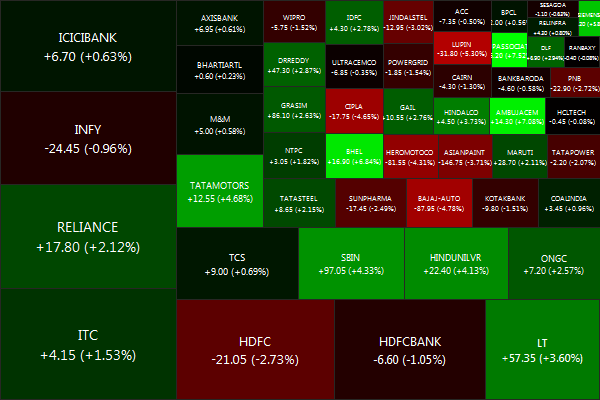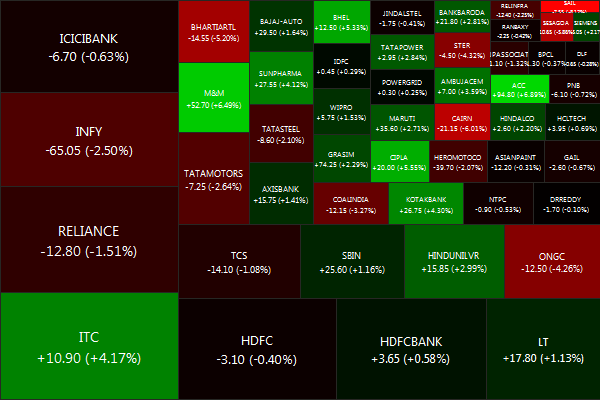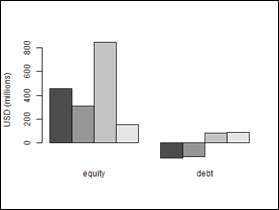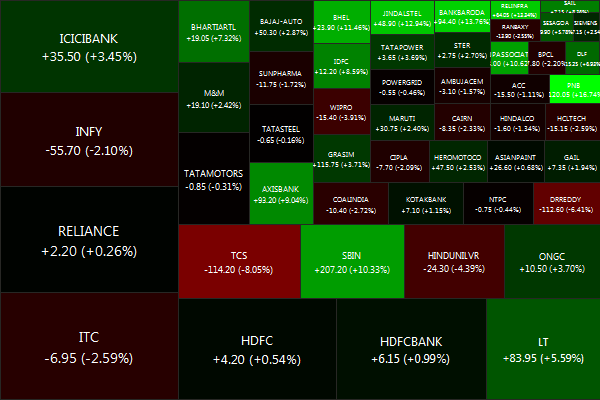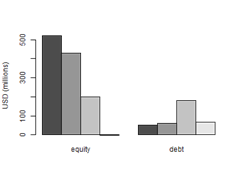Using a Trailing Stop Loss (TSL) is one of the best ways to limit your downside and protect your winning trades. Instead of relying on your gut, here’s a straight-forward way to derive the appropriate TSL percentage for your trades.
ATR based TSL Percentage
ATR stands for Average True Range. It provides a measure of volatility that incorporates gap/limit moves. The range of a day’s trading is simply high – low. The true range extends it to yesterday’s closing price if it was outside of today’s range.1
To set a TSL percentage, just multiply the latest daily ATR value by 2 and divide by the previous close.
What you are doing here is simply attaching a risk tolerance level (2) based on the stock’s intra-day moves averaged over a period of time.
Example
For example, if you were trading [stockquote]COLPAL[/stockquote] today, you would set the TSL to
2 * 30.5/1,250.65 = 4.88%
You can use StockViz to set a TSL alerts for your trades. Read this to see how.

